Opinion & Analysis
Wishon: What lofts should your clubs be?
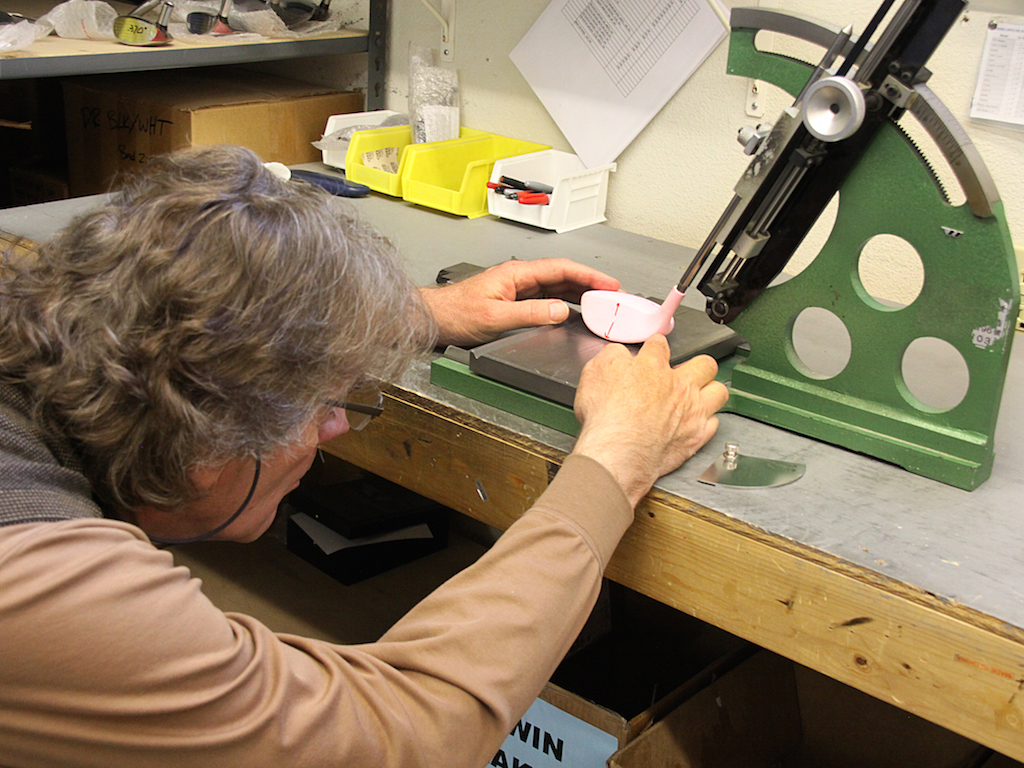
Proper loft fitting involves more than just the loft of the driver. Since loft is the main factor of shot distance, trajectory and backspin for each club in the bag, the clubfitter has to consider several factors for each golfer when making the recommendation for the best lofts for each club.
Factors for determining loft
Key to this is the right set makeup for each golfer. As such the most important golfer inputs that are used to help determine the best initial lofts prior to hit testing are shown above.
The following is an overview of the key points in loft determination for the driver, woods, hybrids and irons.
[quote_box_center]The higher the clubhead speed and the more upward the angle of attack, the lower the driver loft should be for optimal tee shot performance.
The lower the clubhead speed and the more downward the angle of attack, the higher the driver loft should be for optimal tee shot performance.[/quote_box_center]
Launch angle is the No. 1 most important launch monitor parameter to observe and react to in determining the golfer’s best driver loft. Spin outputs come a distant second behind visual observation of the ball flight and the golfer’s clubhead speed. The higher the clubhead speed, the more possibility there may be for a spin issue to be considered in the fitting of the loft. But never should the spin output of the launch monitor trump the importance of the observation of the ball flight shape.
Too many golfers focus too much on the backspin measurement for the driver on a launch monitor – ball flight shape tells you more about driver backspin fitting than a launch monitor.
Learn what a driver shot hit with too much backspin looks like. Achieving the best launch angle and ball flight shape is more important than achieving the best backspin measurement.
Loft is the No. 1 way to change backspin and launch angle. The shaft will change spin and launch angle for golfers with later-to-releases, but only SLIGHTLY. The only way the shaft can reduce backspin for a golfer with an actual high spin problem is if the new shaft is stiffer overall and or stiffer in the tip section than the golfer’s current shaft. It is NEVER wise to increase stiffness in a shaft beyond what is the golfer’s proper flex and bend profile as the way to try to reduce the spin.
When the golfer does actually have a problem of too much backspin with the driver — one that is verified with a visual analysis of the ball flight shape — 98 percent of the time it is a problem that has to be resolved by a swing change and not from an equipment change.
Knowing the lowest fairway wood loft and lowest iron loft that the golfer can hit consistently well up in the air to achieve proper carry distance is the key for choosing:
- The golfer’s first fairway wood after the driver.
- The number of hybrids or high-lofted fairway woods a golfer needs.
- The first iron in a golfer’s set.
This is why proper loft fitting also involves deciding what the golfer’s best set makeup will be at the same time.
If you doubt the golfer’s own evaluation of the lowest loft wood and iron they hit consistently well, always recommend more loft for the first fairway wood after the driver and one more hybrid or high-lofted fairway wood before starting the iron set makeup.
The current lofts of the golfer’s irons play a role in iron loft fitting because no golfer wants a new set of irons that he hits shorter in distance per each number. There is nothing wrong with very low lofts in an iron set as long as the correct judgment is made for the golfer’s set makeup recommendation. For example, the stronger the lofts in the irons, the more hybrids or high-lofted woods there would be and the higher the number of the first iron.
Much lower-lofted iron sets may require a change in the set makeup such that the golfer’s first iron may need to be a 6 iron or even a 7 iron. Never fit a golfer with a loft that he/she cannot hit well up in the air to fly with reasonable consistency.
Loft gaps between clubs should be greater as the golfer’s clubhead speed is slower
- 4-degree gaps: 5 iron swing speed of 80 mph or more
- 5-degree gaps: 5 iron swing speed of 65-to-75 mph
- 6-degree gaps: 5 iron swing speed under 65 mph
Nine times out of 10, when a golfer hits the ball VERY high the reason is a swing error in which the golfer is releasing the club in a way that allows the clubhead to pass the hands before impact and thus adds dynamic loft to the clubhead to result in the very high flight. In such cases, lower loft(s) will only help a little. The remedy to bring the ball down to a reasonable height will almost always be lessons to correct the impact position error.
Clubhead center of gravity (CG) can help more with loft fitting to achieve a little bit better trajectory for proper carry distance in the fairway woods first, hybrids second and irons last. But the effect of CG on shot height is ALWAYS proportional to the golfer’s club head speed and angle of attack.
[quote_box_center]The higher the clubhead speed, the more the CG can visibly affect the trajectory of a given loft angle and vice versa.
The more downward the angle of attack, the less the CG can visibly assist the trajectory from a given loft angle.[/quote_box_center]
In other words, the slower the clubhead speed and more downward the angle of attack, the less the CG has any effect on shot height and the more that loft becomes the only factor to improve shot height and with it, proper carry distance for optimizing distance.
Related
- What length should your clubs be?
- What lofts should your clubs be?
- Face angle is crucial for a proper fitting
- The best way to fit lie angle
- How to choose the right club head design
- Tom Wishon’s keys to set makeup
- Getting the right size grip, time after time
- What shaft weight should you play?
- What swing weight should your clubs be?
- What shaft flex should I use?
This story is part of a 10-part series from Tom Wishon on professional club fitting.
- LIKE64
- LEGIT274
- WOW77
- LOL11
- IDHT11
- FLOP23
- OB8
- SHANK16
Opinion & Analysis
The Wedge Guy: What really makes a wedge work? Part 2

In my last post, I explained the basic performance dynamics of “smash factor” and “gear effect” as they apply to your wedges and your wedge play success. If you missed that post, you can read it here.
At the end of that post, I promised “part 2” of this discussion of what makes a wedge work the way it does. So, let’s dive into the other two components of any wedge – the shaft and the grip.
It’s long been said that the shaft is “the engine of the golf club.” The shaft (and grip) are your only connection to all the technologies that are packed into the head of any golf club, whether it be a driver, fairway, hybrid, iron, wedge or even putter.
And you cannot ignore those two components of your wedges if your goal is optimizing your performance.
I’ve long been an advocate of what I call a “seamless transition” from your irons into your wedges, so that the feel and performance do not disconnect when you choose a gap wedge, for example, instead of your iron-set-matching “P-club.” In today’s golf equipment marketplace, more and more golfers are making the investment of time and money to experience an iron fitting, going through trial and error and launch monitor measuring to get just the right shaft in their irons.
But then so many of those same golfers just go into a store and choose wedges off the retail display, with no similar science involved at all. And that’s why I see so many golfers with a huge disconnect between their custom-fitted irons, often with lighter and/or softer graphite or light steel shafts . . . and their off-the-rack wedges with the stock stiff steel ‘wedge flex’ shaft common to those stock offerings.
If your wedge shafts are significantly heavier and stiffer than the shafts in your irons, it is physically impossible for you to make the same swing. Period.
To quickly improve your wedge play, one of the first things you can do is have your wedges re-shafted with the same or similar shaft that is in your irons.
There’s another side of that shaft weight equation; if you don’t have the forearm and hand strength of a PGA Tour professional, you simply cannot “handle” the same weight shaft that those guys play to master the myriad of ‘touch shots’ around the greens.
Now, let’s move on to the third and other key component of your wedges – the grips. If those are not similar in shape and feel to the grips on your irons, you have another disconnect. Have your grips checked by a qualified golf club professionals to make sure you are in sync there.
The one caveat to that advice is that I am a proponent of a reduced taper in your wedge grips – putting two to four more layers of tape under the lower hand, or selecting one of the many reduced taper grips on the market. That accomplishes two goals for your scoring.
First, it helps reduce overactive hands in your full and near-full wedge swings. Quiet hands are key to good wedge shots.
And secondly, it provides a more consistent feel of the wedge in your hands as you grip down for those shorter and more delicate shots around the greens. And you should always grip down as you get into those touch shots. I call it “getting closer to your work.”
So, if you will spend as much time selecting the shafts and grips for your wedges as you do choosing the brand, model, and loft of them, your scoring range performance will get better.
More from the Wedge Guy
- The Wedge Guy: What really makes a wedge work? Part 1
- The Wedge Guy: The easiest-to-learn golf basic
- The Wedge Guy: Golf mastery begins with your wedge game
- LIKE3
- LEGIT3
- WOW0
- LOL1
- IDHT1
- FLOP0
- OB0
- SHANK4
19th Hole
Vincenzi’s 2024 Wells Fargo Championship betting preview: Tommy Fleetwood ready to finally land maiden PGA Tour title

The PGA Tour season ramps back up this week for another “signature event,” as golf fans look forward to the year’s second major championship next week.
After two weaker-field events in the Zurich Classic and the CJ Cup Byron Nelson, most of the best players in the world will head to historic Quail Hollow for one of the best non-major tournaments of the year.
Last season, Wyndham Clark won the event by four shots.
Quail Hollow is a par-71 measuring 7,521 yards that features Bermudagrass greens. The tree-lined, parkland style course can play quite difficult and features one of the most difficult three-hole stretches in golf known as “The Green Mile,” which makes up holes 16-18: two mammoth par 4s and a 221-yard par 3. All three holes have an average score over par, and water is in play in each of the last five holes on the course.
The field is excellent this week with 68 golfers teeing it up without a cut. All of the golfers who’ve qualified are set to tee it up, with the exception of Scottie Scheffler, who is expecting the birth of his first child.
Past Winners at Quail Hollow
- 2023: Wyndham Clark (-19)
- 2022: Max Homa (-8)
- 2021: Rory McIlroy (-10)
- 2019: Max Homa (-15)
- 2018: Jason Day (-12)
- 2017: Justin Thomas (-8) (PGA Championship)
- 2016: James Hahn (-9)
- 2015: Rory McIlroy (-21)
Key Stats For Quail Hollow
Strokes Gained: Approach
Strokes gained: Approach will be extremely important this week as second shots at Quail Hollow can be very difficult.
Total SG: Approach Over Past 24 Rounds
- Akshay Bhatia (+1.16)
- Tom Hoge (+1.12)
- Corey Conners (+1.01)
- Shane Lowry (+0.93)
- Austin Eckroat (+0.82)
Strokes Gained: Off the Tee
Quail Hollow is a long course on which it is important to play from the fairway. Both distance and accuracy are important, as shorter tee shots will result in approach shots from 200 or more yards. With most of the holes heavily tree lined, errant drives will create some real trouble for the players.
Strokes Gained: Off the Tee Past 24 Rounds:
- Ludvig Aberg (+0.73)
- Rory McIlroy (+0.69)
- Xander Schauffele (+0.62)
- Viktor Hovland (+0.58)
- Chris Kirk (+0.52)
Proximity: 175-200
The 175-200 range is key at Quail Hollow. Players who can hit their long irons well will rise to the top of the leaderboard.
Proximity: 175-200+ over past 24 rounds:
- Cameron Young (28’2″)
- Akshay Bhatia (29’6″)
- Ludvig Aberg (+30’6″)
- Sam Burns (+30’6″)
- Collin Morikawa (+30’9″)
SG: Total on Tom Fazio Designs
Players who thrive on Tom Fazio designs get a bump for me at Quail Hollow this week.
SG: Total on Tom Fazio Designs over past 36 rounds:
- Patrick Cantlay (+2.10)
- Rory McIlroy (+1.95)
- Tommy Fleetwood (+1.68)
- Austin Eckroat (+1.60)
- Will Zalatoris (+1.57)
Strokes Gained: Putting (Bermudagrass)
Strokes Gained: Putting has historically graded out as the most important statistic at Quail Hollow. While it isn’t always predictable, I do want to have it in the model to bump up golfers who prefer to putt on Bermudagrass.
Strokes Gained: Putting (Bermudagrass) Over Past 24 Rounds:
- Taylor Moore (+0.82)
- Nick Dunlap (+.76)
- Wyndham Clark (+.69)
- Emiliano Grillo (+.64)
- Cam Davis (+.61)
Course History
This stat will incorporate players that have played well in the past at Quail Hollow.
Course History over past 36 rounds (per round):
- Rory McIlroy (+2.50)
- Justin Thomas (+1.96)
- Jason Day (+1.92)
- Rickie Fowler (+1.83)
- Viktor Hovland (+1.78)
Wells Fargo Championship Model Rankings
Below, I’ve compiled overall model rankings using a combination of the five key statistical categories previously discussed — SG: Approach (27%), SG: Off the Tee (23%), SG: Total on Fazio designs (12%), Proximity: 175-200 (12%), SG: Putting Bermuda grass (12%), and Course History (14%).
- Wyndham Clark
- Rory McIlroy
- Xander Schauffele
- Shane Lowry
- Hideki Matsuyama
- Viktor Hovland
- Cameron Young
- Austin Eckroat
- Byeong Hun An
- Justin Thomas
2024 Wells Fargo Championship Picks
Tommy Fleetwood +2500 (DraftKings)
I know many out there have Tommy fatigue when it comes to betting, which is completely understandable given his lack of ability to win on the PGA Tour thus far in his career. However, history has shown us that players with Fleetwood’s talent eventually break though, and I believe for Tommy, it’s just a matter of time.
Fleetwood has been excellent on Tom Fazio designs. Over his past 36 rounds, he ranks 3rd in the field in Strokes Gained: Total on Fazio tracks. He’s also been incredibly reliable off the tee this season. He’s gained strokes in the category in eight of his past nine starts, including at The Masters, the PLAYERS and the three “signature events” of the season. Tommy is a golfer built for tougher courses and can grind it out in difficult conditions.
Last year, Fleetwood was the first-round leader at this event, firing a Thursday 65. He finished the event in a tie for 5th place.
For those worried about Fleetwood’s disappointing start his last time out at Harbour Town, he’s bounced back nicely after plenty of poor outings this season. His T7 at the Valero Texas Open was after a MC and T35 in his prior two starts and his win at the Dubai Invitational came after a T47 at the Sentry.
I expect Tommy to bounce back this week and contend at Quail Hollow.
Justin Thomas +3000 (DraftKings)
It’s been a rough couple of years for Justin Thomas, but I don’t believe things are quite as bad as they seem for JT. He got caught in the bad side of the draw at Augusta for last month’s Masters and has gained strokes on approach in seven of his nine starts in 2024.
Thomas may have found something in his most recent start at the RBC Heritage. He finished T5 at a course that he isn’t the best fit for on paper. He also finally got the putter working and ranked 15th in Strokes Gained: Putting for the week.
The two-time PGA champion captured the first of his two major championships at Quail Hollow back in 2017, and some good vibes from the course may be enough to get JT out of his slump.
Thomas hasn’t won an event in just about two years. However, I still believe that will change soon as he’s been one of the most prolific winners throughout his PGA Tour career. Since 2015, he has 15 PGA Tour wins.
Course history is pretty sticky at Quail Hollow, with players who like the course playing well there on a regular basis. In addition to JT’s PGA Championship win in 2017, he went 4-1 at the 2022 Presidents Cup and finished T14 at the event last year despite being in poor form. Thomas can return as one of the top players on the PGA Tour with a win at a “signature event” this week.
Cameron Young +3500 (DraftKings)
For many golf bettors, it’s been frustrating backing Cam Young this season. His talent is undeniable, and one of the best and most consistent performers on the PGA Tour. He just hasn’t broken through with a victory yet. Quail Hollow has been a great place for elite players to get their first victory. Rory McIlroy, Anthony Kim, Rickie Fowler and Wyndham Clark all notched their first PGA Tour win at Quail.
Throughout Cam Young’s career, he has thrived at tougher courses with strong fields. This season, he finished T16 at Riviera and T9 at Augusta National, demonstrating his preference of a tough test. His ability to hit the ball long and straight off the tee make him an ideal fit for Quail Hollow, despite playing pretty poorly his first time out in 2023 (T59). Young should be comfortable playing in the region as he played his college golf at Wake Forest, which is about an hour’s drive from Quail Hollow.
The 26-year-old has played well at Tom Fazio designs in the past and ranks 8th in the field in Strokes Gained: Total on those courses in his last 36 rounds. Perhaps most importantly, this season, Young is the best player on the PGA Tour in terms of proximity from 175-200 in the fairway, which is where a plurality and many crucial shots will come from this week.
Young is an elite talent and Quail Hollow has been kind to players of his ilk who’ve yet to win on Tour.
Byeong Hun An +5000 (FanDuel)
Byeong Hun An missed some opportunities last weekend at the CJ Cup Byron Nelson. He finished T4 and played some outstanding golf, but a couple of missed short putts prevented him from getting to the winning score of -23. Despite not getting the win, it’s hard to view An’s performance as anything other than an overwhelming success. It was An’s fourth top-ten finish of the season.
Last week, An gained 6.5 strokes ball striking, which was 7th in the field. He also ranked 12th for Strokes Gained: Approach and 13th for Strokes Gained: Off the Tee. The South Korean has been hitting the ball so well from tee to green all season long and he now heads to a golf course that should reward his precision.
An’s driver and long irons are absolute weapons. At Quail Hollow, players will see plenty of approach shots from the 175-200 range as well as some from 200+. In his past 24 rounds, Ben ranks 3rd in the field in proximity from 175-200 and 12th in proximity from 200+. Playing in an event that will not end up being a “birdie” fest should help An, who can separate from the field with his strong tee to green play. The putter may not always cooperate but getting to -15 is much easier than getting to -23 for elite ball strikers who tend to struggle on the greens.
Winning a “signature event” feels like a tall task for An this week with so many elite players in the field. However, he’s finished T16 at the Genesis Invitational, T16 at The Masters and T8 at the Arnold Palmer Invitational. The 32-year-old’s game has improved drastically this season and I believe he’s ready to get the biggest win of his career.
- LIKE8
- LEGIT4
- WOW1
- LOL1
- IDHT0
- FLOP0
- OB0
- SHANK1
19th Hole
Vincenzi’s LIV Golf Singapore betting preview: Course specialist ready to thrive once again

After another strong showing in Australia, LIV Golf will head to Sentosa Golf Club in Singapore looking to build off of what was undoubtedly their best event to date.
Sentosa Golf Club sits on the southern tip of Singapore and is one of the most beautiful courses in the world. The course is more than just incredible scenically; it was also rated 55th in Golf Digest’s top-100 courses in 2022-2023 and has been consistently regarded as one of the best courses in Asia. Prior to being part of the LIV rotation, the course hosted the Singapore Open every year since 2005.
Sentosa Golf Club is a par 71 measuring 7,406 yards. The course will require precise ball striking and some length off the tee. It’s possible to go low due to the pristine conditions, but there are also plenty of hazards and difficult spots on the course that can bring double bogey into play in a hurry. The Bermudagrass greens are perfectly manicured, and the course has spent millions on the sub-air system to keep the greens rolling fast. I spoke to Asian Tour player, Travis Smyth, who described the greens as “the best [he’s] ever played.”
Davis Love III, who competed in a Singapore Open in 2019, also gushed over the condition of the golf course.
“I love the greens. They are fabulous,” the 21-time PGA Tour winner said.
Love III also spoke about other aspects of the golf course.
“The greens are great; the fairways are perfect. It is a wonderful course, and it’s tricky off the tee.”
“It’s a long golf course, and you get some long iron shots. It takes somebody hitting it great to hit every green even though they are big.”
As Love III said, the course can be difficult off the tee due to the length of the course and the trouble looming around every corner. It will take a terrific ball striking week to win at Sentosa Golf Club.
In his pre-tournament press conference last season, Phil Mickelson echoed many of the same sentiments.
“To play Sentosa effectively, you’re going to have a lot of shots from 160 to 210, a lot of full 6-, 7-, 8-iron shots, and you need to hit those really well and you need to drive the ball well.”
Golfers who excel from tee to green and can dial in their longer irons will have a massive advantage this week.
Stat Leaders at LIV Golf Adelaide:
Fairways Hit
1.) Louis Oosthuizen
2.) Anirban Lahiri
3.) Jon Rahm
4.) Brendan Steele
5.) Cameron Tringale
Greens in Regulation
1.) Brooks Koepka
2.) Brendan Steele
3.) Dean Burmester
4.) Cameron Tringale
5.) Anirban Lahiri
Birdies Made
1.) Brendan Steele
2.) Dean Burmester
3.) Thomas Pieters
4.) Patrick Reed
5.) Carlos Ortiz
LIV Golf Individual Standings:
1.) Joaquin Niemann
2.) Jon Rahm
3.) Dean Burmester
4.) Louis Oosthuizen
5.) Abraham Ancer
LIV Golf Team Standings:
1.) Crushers
2.) Legion XIII
3.) Torque
4.) Stinger GC
5.) Ripper GC
LIV Golf Singapore Picks
Sergio Garcia +3000 (DraftKings)
Sergio Garcia is no stranger to Sentosa Golf Club. The Spaniard won the Singapore Open in 2018 by five strokes and lost in a playoff at LIV Singapore last year to scorching hot Talor Gooch. Looking at the course setup, it’s no surprise that a player like Sergio has played incredible golf here. He’s long off the tee and is one of the better long iron players in the world when he’s in form. Garcia is also statistically a much better putter on Bermudagrass than he is on other putting surfaces. He’s putt extremely well on Sentosa’s incredibly pure green complexes.
This season, Garcia has two runner-up finishes, both of them being playoff losses. Both El Camaleon and Doral are courses he’s had success at in his career. The Spaniard is a player who plays well at his tracks, and Sentosa is one of them. I believe Sergio will get himself in the mix this week. Hopefully the third time is a charm in Singapore.
Paul Casey +3300 (FanDuel)
Paul Casey is in the midst of one of his best seasons in the five years or so. The results recently have been up and down, but he’s shown that when he’s on a golf course that suits his game, he’s amongst the contenders.
This season, Casey has finishes of T5 (LIV Las Vegas), T2 (LIV Hong Kong), and a 6th at the Singapore Classic on the DP World Tour. At his best, the Englishman is one of the best long iron players in the world, which makes him a strong fit for Sentosa. Despite being in poor form last season, he was able to fire a Sunday 63, which shows he can low here at the course.
It’s been three years since Casey has won a tournament (Omega Dubai Desert Classic in 2021), but he’s been one of the top players on LIV this season and I think he can get it done at some point this season.
Mito Pereira +5000 (Bet365)
Since Mito Pereira’s unfortunate demise at the 2022 PGA Championship, he’s been extremely inconsistent. However, over the past few months, the Chilean has played well on the International Series as well as his most recent LIV start. Mito finished 8th at LIV Adelaide, which was his best LIV finish this season.
Last year, Pereira finished 5th at LIV Singapore, shooting fantastic rounds of 67-66-66. It makes sense why Mito would like Sentosa, as preeminent ball strikers tend to rise to the challenge of the golf course. He’s a great long iron player who is long and straight off the tee.
Mito has some experience playing in Asia and is one of the most talented players on LIV who’s yet to get in the winner’s circle. I have questions about whether or not he can come through once in contention, but if he gets there, I’m happy to roll the dice.
Andy Ogletree +15000 (DraftKings)
Andy Ogletree is a player I expected to have a strong 2024 but struggled early in his first full season on LIV. After failing to crack the top-25 in any LIV event this year, the former U.S. Amateur champion finally figured things out, finished in a tie for 3rd at LIV Adelaide.
Ogletree should be incredible comfortable playing in Singapore. He won the International Series Qatar last year and finished T3 at the International Series Singapore. The 26-year-old was arguably the best player on the Asian Tour in 2023 and has been fantastic in the continent over the past 18 months.
If Ogletree has indeed found form, he looks to be an amazing value at triple-digit odds.
- LIKE3
- LEGIT3
- WOW1
- LOL2
- IDHT0
- FLOP2
- OB0
- SHANK0
-

 19th Hole3 weeks ago
19th Hole3 weeks agoJustin Thomas on the equipment choice of Scottie Scheffler that he thinks is ‘weird’
-

 19th Hole3 weeks ago
19th Hole3 weeks ago‘Absolutely crazy’ – Major champ lays into Patrick Cantlay over his decision on final hole of RBC Heritage
-

 19th Hole2 weeks ago
19th Hole2 weeks agoLET pro gives detailed financial breakdown of first week on tour…and the net result may shock you
-

 19th Hole3 days ago
19th Hole3 days agoReport: LIV star turns down PGA Championship invite due to ‘personal commitments’
-

 19th Hole1 week ago
19th Hole1 week agoGary Player claims this is what ‘completely ruined’ Tiger Woods’ career
-

 Whats in the Bag2 weeks ago
Whats in the Bag2 weeks agoTeam McIlowry (Rory McIlroy, Shane Lowry) winning WITBs: 2024 Zurich Classic
-

 Equipment1 week ago
Equipment1 week agoGolf fans left surprised by LIV’s choice of course for its 2024 individual championship event
-

 19th Hole1 week ago
19th Hole1 week agoLIV star splits with swing coach after working together for 14 years

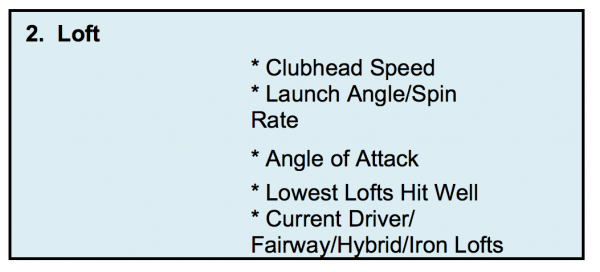
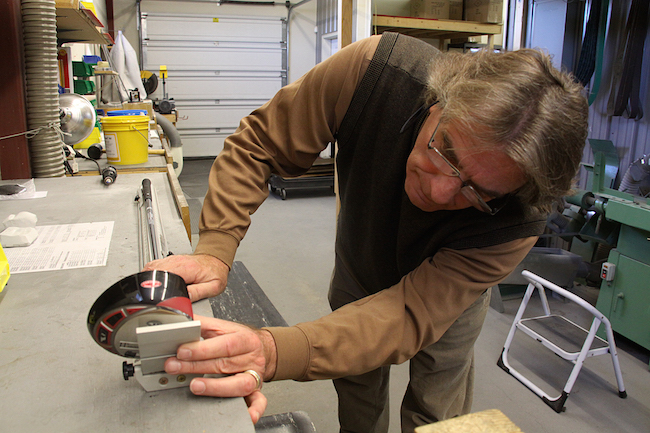



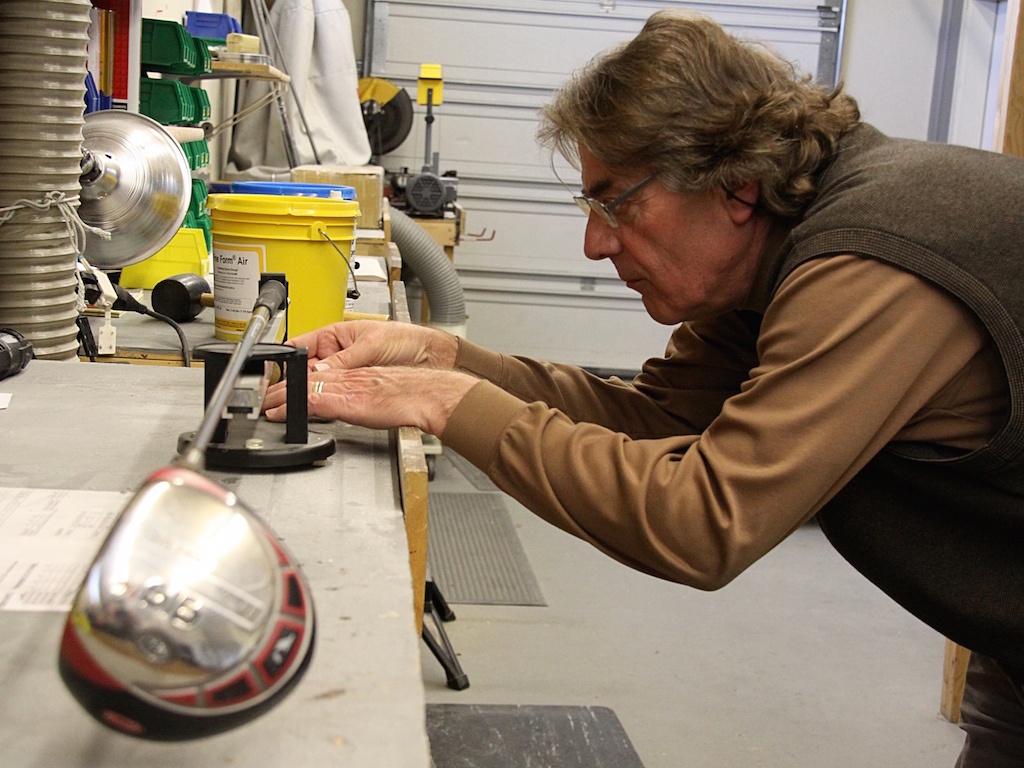

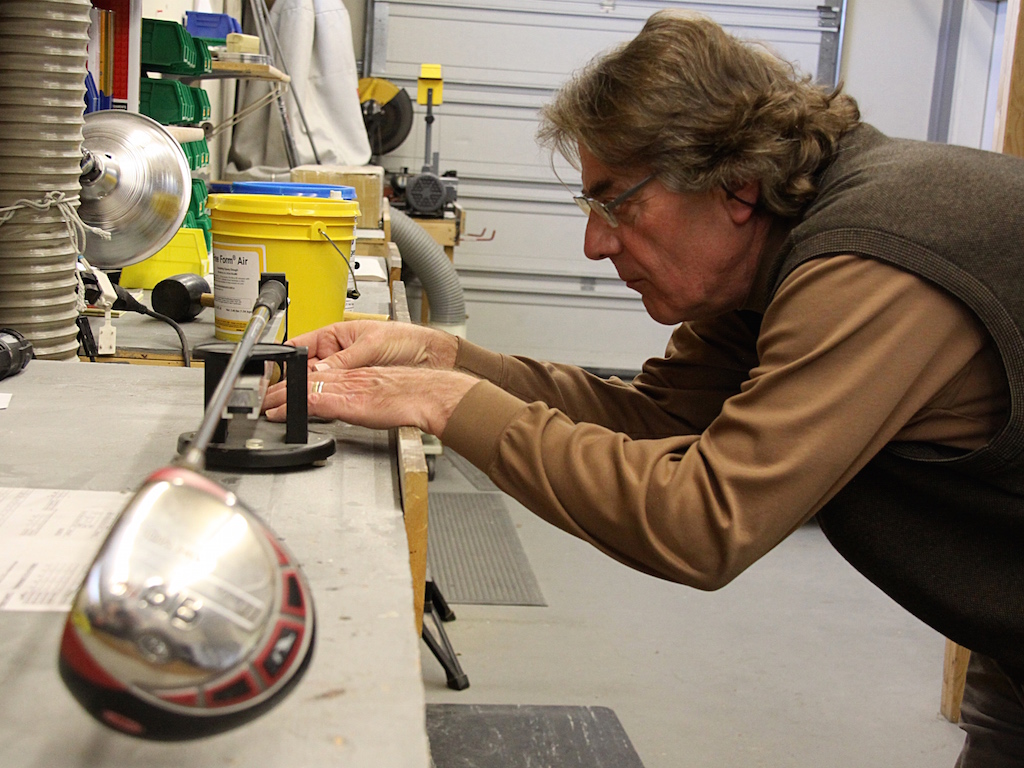
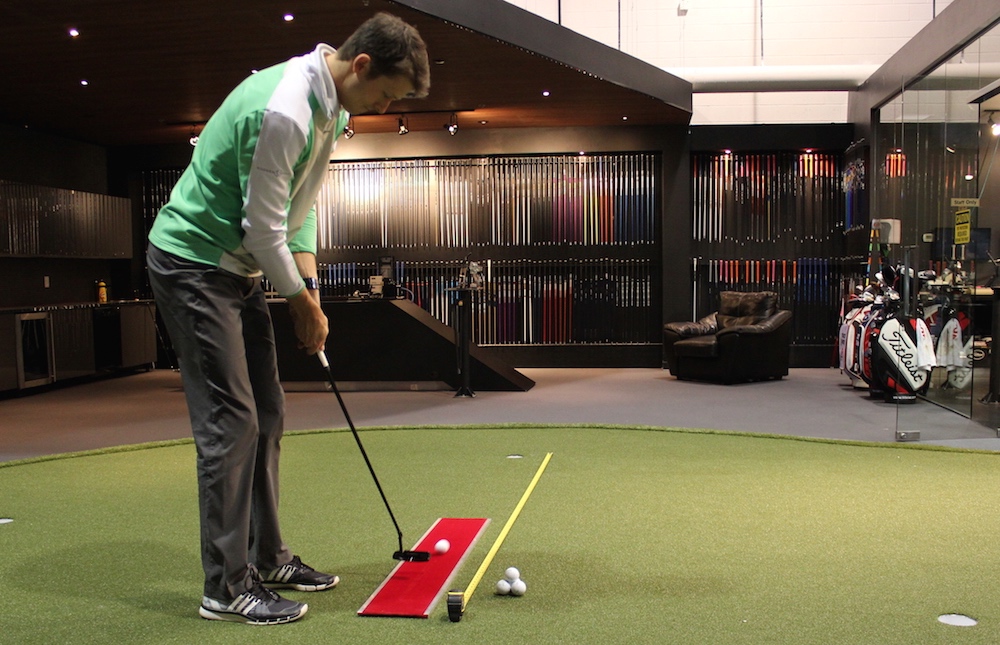
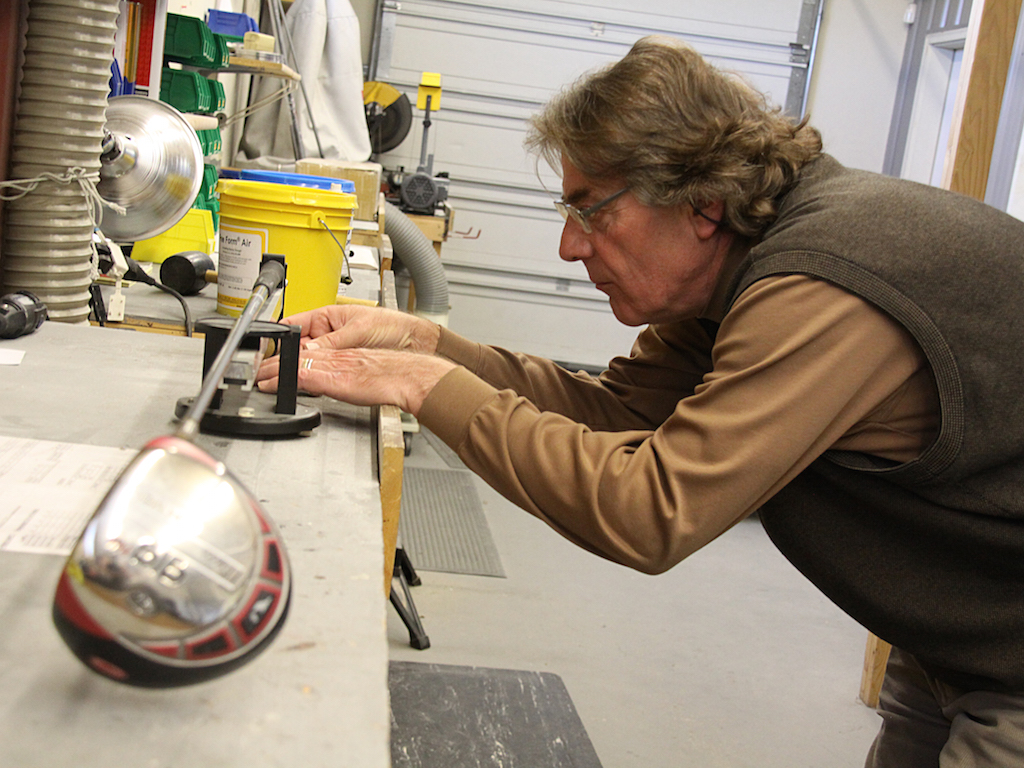
















John
Jul 4, 2017 at 11:31 am
Tom, i think your sort of wrong with your slowing down part of the arms and the speed of the club head? what actually is happening is central-fugal force. if you (agree) keep the angle between writs and club head to late. the weight of the club head increases (G Force) as its released. actually if there is no tension in the hands you should not be forcefully releasing the club? this should happen naturally. again due to swing plain and G force (the whip effect) as the club head move toward the ball the length of the arc is increasing and there for gravity take over and the actually speed of the head slows the hands down as the club and arm angle increases. more golfers do not understand this effect as there body / arms are to busy fighting to try to get or keep the club on plain… the out to in wing path is a result of allowing the hand to actually swing down on the incorrect path (out of control) allowing central fugal force to throw the hand away from the body. But the brain work much after than the eye and somehow with good eye and hand coordination the club get to the ball in a slight out to in path. the club head could be actually square but pulling across the ball that causing the slice. fundamentally to belief? the draw is actually an open club face delivers from the inside going out (not a closed club face) it may be closing but not actually closed at impact
Kourt
Nov 21, 2015 at 2:10 pm
Hi Tom I was wondering if you’ve ever seen a benefit in a high swing speed player to having only 3 degree loft gap in the higher lofted irons? Say for example switching from 48, 52,56,60 to 48,51,54,57,60.
I currently have 4 degree gap covering 24-60 in irons. I feel like having more options inside 160 yards (which is where I find im hitting the majority of my approach shots on almost all courses I play) would be more effective then having another long iron or hybrid in the bag.
I have about 15 yard gap between wedges currently and only about a 10yard gap in the longer irons.
Since the majority of scoring opportunities come from inside 160 yards for me, and outside 200 yards even on my best swings its rare to be inside 15 ft, do you think decreasing the gap to 3 degrees would shrink the yardage gaps or is it too small of a change to even notice much improvement?
Justin
Jan 15, 2015 at 9:55 am
Do you feel that club length has any impact on swing path and not vice versa? (i.e. longer club lengths promoting a more in to out path whether due to swing weight, feel, etc…?)
Tom Wishon
Jan 15, 2015 at 7:23 pm
Justin
Absolutely the length of the driver has an extremely important relationship to the swing path and to the release. From our extensive work in this area, the longer the length of the driver, the more tendency there is to release the club earlier AND to swing over the top and more outside in. Of course, the more athletically inclined the golfer, the more the golfer can “fight off” these effects to still retain his path and release. But no question for the average to less skilled player, longer driver lengths really make it difficult for them to ever learn how to swing with an inside out to square path and to be able to hold the release longer on the downswing.
The reason this happens is because the longer the driver length, the higher the MOI of the fully assembled driver (not talking MOI of the head here, talking MOI of the whole club). And the higher the MOI of the full driver, the more load it puts on the golfer and the weak parts of his swing. hence with avg to less skilled players, the longer length in essence “attacks” their weak points which typically are their path and release.
Ken
Jan 14, 2015 at 11:48 am
I’m a low-launch low-swing-speed senior, and I sort of agree with you. But I think the confusion comes from the fact that Tom appears to be talking about trying to get high-launch, high-spin players to come down by giving them a stiffer shaft with a high bend.
In your case, I’ll bet that the low-bend shafts are also softer than the high bend ones, and that combination should help bring the ball flight up.
There’s also the fact that going the direction you did often gives players like us a much better feel for the action of the shaft, allowing us to better time the release, which improves the ball flight.
K
Eugene Marchetti
Jan 14, 2015 at 11:29 am
Your articles are always full of very useful information. Do you ever reccomend matching your set to the course you play the most. I played 73 rounds last year with 62 on the same course built in 1927 of only 6100 yards. Extremely small greens and tree lined fairways put the emphasis on accuracy not distance. There are five holes were a driver and even a three wood gets you in trouble and our two par fives are really long par fours. Therefore I don’t carry a three wood but hit a 16 degree four wood as my first wood, after my driver. Also, i found my 3 hybrid 18 degrees goes too far on a couple of holes which land in a hazard or sand trap so my set, after the woods, starts with a 21 degree four wood. I think matching your set to the course is extremely important. Again, thanks for your informative articles.
myron miller
Jan 14, 2015 at 10:41 am
I like the article overall and got some good information out of it. One point I’m confused about. You said the shaft can change launch angle only slightly and then only for later-releases. My confusion comes about in my own personal experience. Being a tad on the old side, my distance has obviously decreased significantly. In the typical golfer desire for more distance, I’ve tried a lot of different shafts in my driver. What was really interesting is that those with the bend point near the tip produced significantly higher launch angles than those with the bend towards the grip with mid-average bend shafts still being lower than the low bend shafts.
And by significantly different, I’m talking launch angles running from 6-8 degrees on high bend to 13-17 degrees for the tip flexible, with the obvious reductions in distance from the lower launch angle. To the best of my knowledge and the fitters I worked with, nothing on my swing changed, just the shaft bend profile. We tried to keep the same overall flex as much as possible.
And of course, I realize that this is a specific case and not generally true, but?
Do you understand my confusion and help explain what I am not understanding here?
Tom Wishon
Jan 15, 2015 at 11:06 am
If the shafts with a softer tip section bend profile did bring about a higher flight, then you must have a later to late-ish release to allow this effect to happen. Let me explain how this works so it can be a little more clear.
As we start the downswing, as long as we keep the wrist hinge angle between the arms and the shaft, the club and the arms are both moving at the same speed. Once we start to unhinge that angle, the arms begin to slow down while the club begins to accelerate. This happens because upon the start of the release, the energy in the arms is being sent to the club. So with the arms giving up their energy to the club, they have to start slowing down, while the club with its increased energy from the arms begins to speed up.
With the arms slowing down and the club speeding up, the accelerating clubhead now starts to push forward against the slowed arms. Because @2/3’s of the mass of the club is in the head, the head now starts to push the shaft into a forward bend shape. And as the shaft bends forward, the loft on the head increases dynamically. So if you have a more flexible shaft or more flexible tip section in the shaft, the amount of forward bend is greater, which means the dynamic loft increase is greater too. And that’s what causes the higher flight from the softer shaft.
BUT. . . this all depends on how much the shaft is still in its forward bending position when the clubhead gets to the ball. If the release of the wrist hinge angle is early in the downswing, the forward bend of the shaft happens well before the head gets to the ball. As such the shaft then can have time to bend forward from the effect of the release, but because the early release causes this too soon in the downswing, the shaft can bend back to straight by the time of impact, which means the shaft’s stiffness design can’t have any effect on the height of the shot.
This is all a PROGRESSIVE ACTION. Meaning, the very latest release causes the shaft to bend forward the most, a sort of late release causes the shaft to be bent forward but not as much as with the very late release, a midway release causes the shaft to be bent forward a tiny bit but not as much with the later or very late release. But then the early to early/midway release causes the forward bending too soon so the shaft can rebound back to have no effect on trajectory. So this is all progressive in its effect on shot height as the release becomes a little later and a little later and a little later.
Hence for you to see a height change from the softer tip shaft, you do have to have somewhat of a late-ish release but definitely not an early release. Hope this helps.